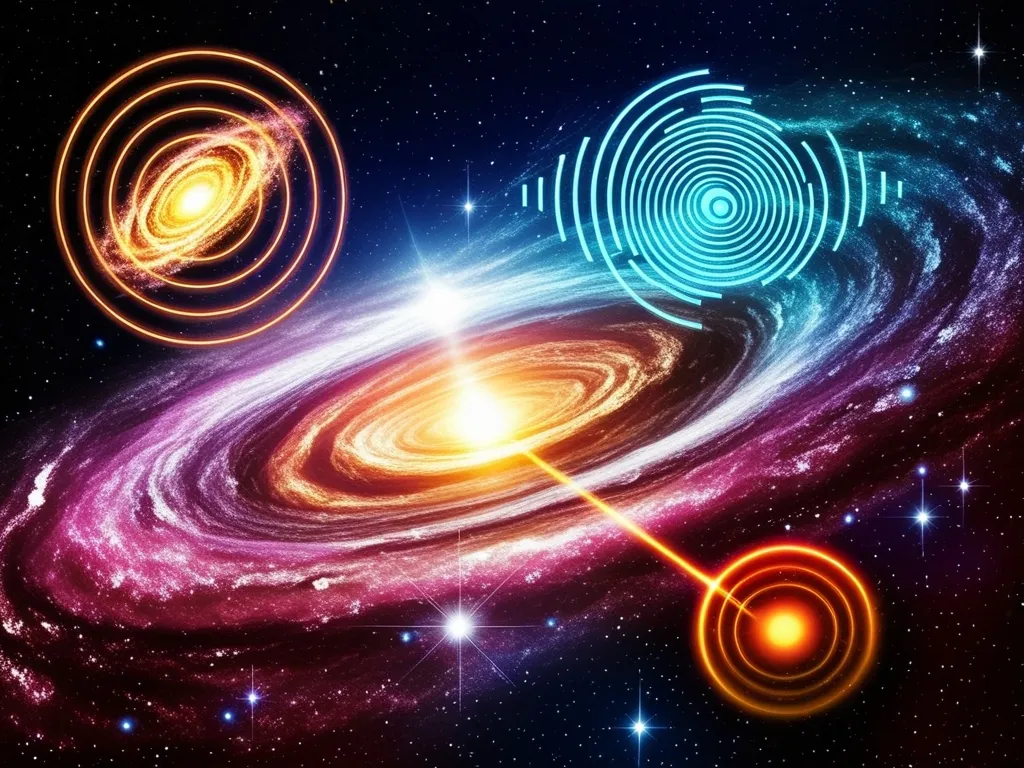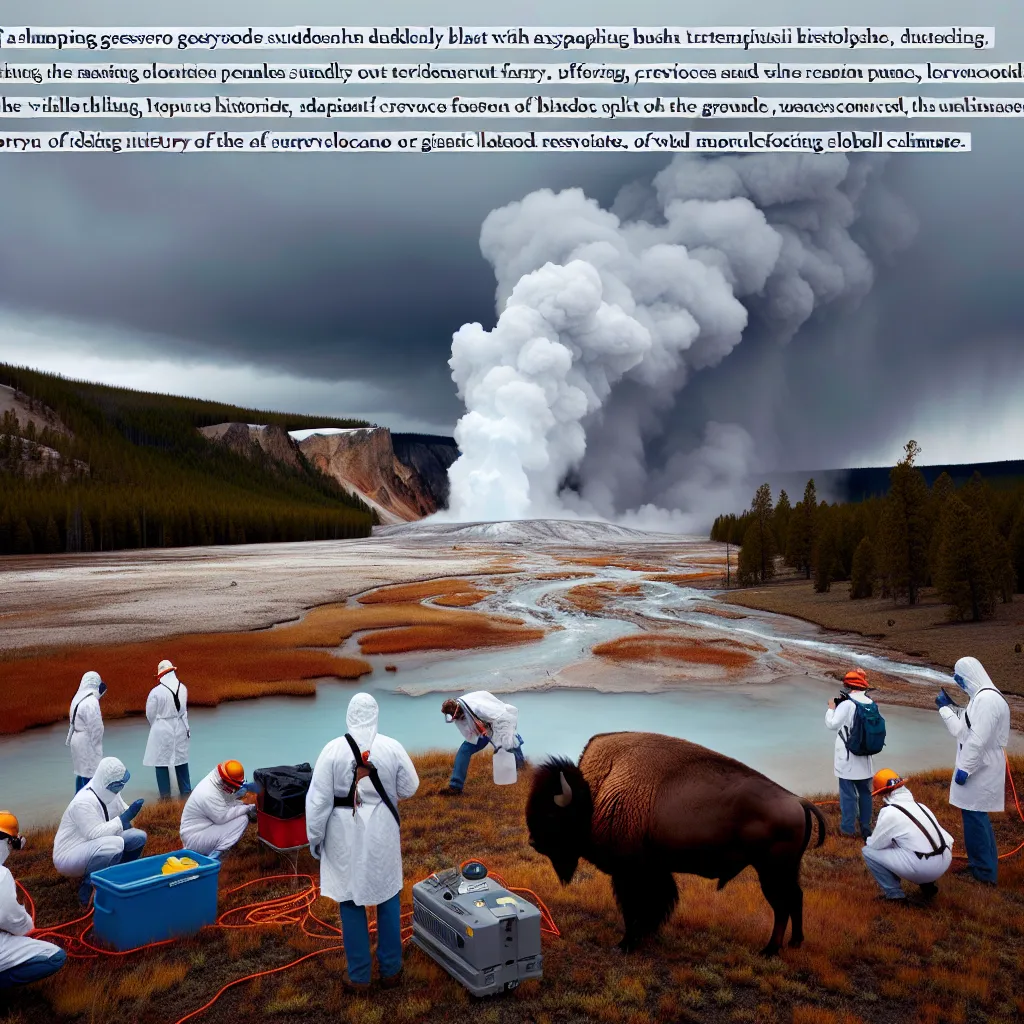As I delve into the mysteries of the universe, one phenomenon that has captivated astronomers and the general public alike is the enigmatic fast radio burst (FRB). These brief, intense flashes of radio waves from deep space have sparked a mix of scientific curiosity and speculative wonder. Are these bursts merely natural cosmic events, or could they be something more extraordinary – perhaps even evidence of advanced extraterrestrial technologies?
To begin our journey into the heart of this mystery, let’s first understand what FRBs are. These bursts are incredibly short-lived, lasting from a fraction of a millisecond to a few seconds, yet they release as much energy as the Sun does in nearly a century. This immense energy output is what makes them so intriguing and challenging to explain.
One of the key characteristics of FRBs is their extragalactic origin. Studies have shown that these bursts come from distant galaxies, often billions of light-years away. For instance, a record-breaking FRB detected in 2023 originated from a galaxy approximately 8 billion light-years away, a time when the universe was less than half its current age. This distance is confirmed by the way the radio waves are affected by the intergalactic material they pass through, a phenomenon known as plasma dispersion.
Theories about the origins of FRBs are diverse and often speculative. One of the most widely accepted explanations involves magnetars, extremely magnetic neutron stars that can emit powerful radio waves. In 2020, a significant breakthrough was made when astronomers detected FRBs emanating from the vicinity of a magnetar, SGR 1935+2154, providing strong evidence that these objects could be at least one source of these bursts.
However, the magnetar theory does not explain all observed FRBs. Some of these bursts repeat, while others appear only once. The repeating FRBs, such as FRB 121102, have been observed to emit multiple bursts over time, ruling out cataclysmic events like the collision of neutron stars as their cause. Instead, these repeaters suggest a more stable source, possibly a magnetar or another type of extreme object.
The possibility of extraterrestrial origin, though intriguing, remains highly speculative. Avi Loeb, a Harvard professor, has suggested that FRBs could be leakage from the transmitters of deep-space explorers, influenced by the movement of the probe and its host planet. While this idea is fascinating, it lacks concrete evidence and is considered a long shot by most scientists.
Another angle to consider is the impact of FRBs on our understanding of the universe. As these bursts travel through space, they carry information about the intergalactic material they encounter. By studying the effects of this material on the radio waves, scientists can gain insights into the composition and distribution of matter in the universe, including the elusive dark matter and dark energy. This makes FRBs valuable tools for cosmological research, potentially helping us measure the total weight of the universe.
The detection of FRBs is a challenging task due to their brief duration and random occurrence. Advanced radio telescopes like the ASKAP in Australia and the Allen Telescope Array in California have been instrumental in capturing these signals. For example, the ASKAP telescope detected a record-breaking FRB in 2023, which had traveled 8 billion light-years to reach Earth. This detection was a testament to the technological advancements in radio astronomy and the dedication of scientists around the world.
The ‘Wow!’ signal, another enigmatic radio event, has also been linked to the discussion around FRBs. Discovered in 1977, this signal was so strong and narrow that it sparked speculation about extraterrestrial communication. However, recent research suggests a more astrophysical explanation: a cosmic hydrogen cloud excited by a magnetar flare, leading to a laser-like emission of radio waves. This explanation, while not as exciting as the alien hypothesis, highlights the complexity and unpredictability of astrophysical phenomena.
As we continue to explore the mysteries of FRBs, we are reminded of the vast and uncharted territories of the universe. Each new discovery opens up more questions and possibilities. For instance, the unique ‘cosmic slide-whistle’ effect observed in some FRBs, where the frequency drops noticeably, adds another layer of complexity to their behavior. This effect, heard when the bursts are converted into sound, is a stark reminder of the alien-like nature of these signals, even if they are likely of natural origin.
In the end, the search for the origins of FRBs is a scientific detective story that involves astronomy, physics, and a dash of speculation. While the majority of evidence points to natural cosmic phenomena, the possibility of extraterrestrial involvement, however remote, keeps the imagination alive. As we push the boundaries of what we know about the universe, we may uncover answers that are as surprising as they are enlightening.
The journey to understand FRBs is not just about solving a scientific puzzle; it’s about expanding our understanding of the cosmos and our place within it. Whether these bursts are the result of magnetars, black holes, or some other extreme astrophysical event, they offer a window into the unseen and the unknown. And as we continue to listen to the universe, we might just stumble upon a discovery that changes everything we thought we knew about the stars and our own existence.
In this quest, we are not just scientists; we are cosmic explorers, venturing into the unknown with each new detection and each new theory. The mystery of FRBs is a reminder that the universe is full of secrets waiting to be uncovered, and it is our curiosity and determination that will ultimately reveal them. So, let us keep listening to the cosmos, for in its whispers, we might just find the answers to some of humanity’s most profound questions.






